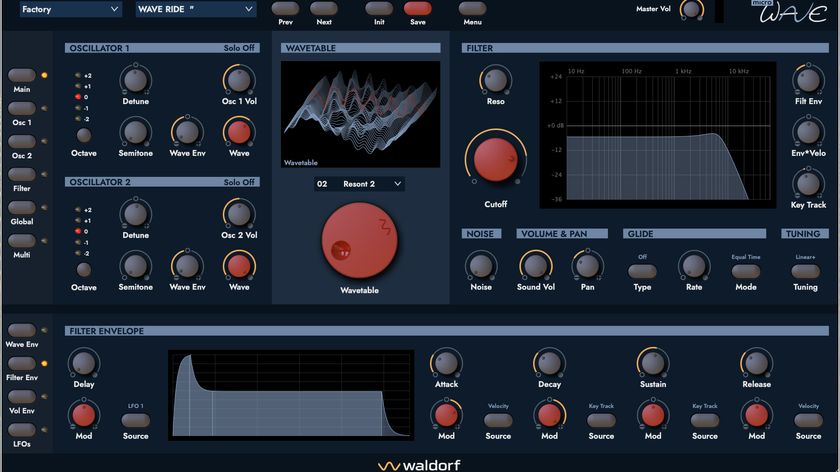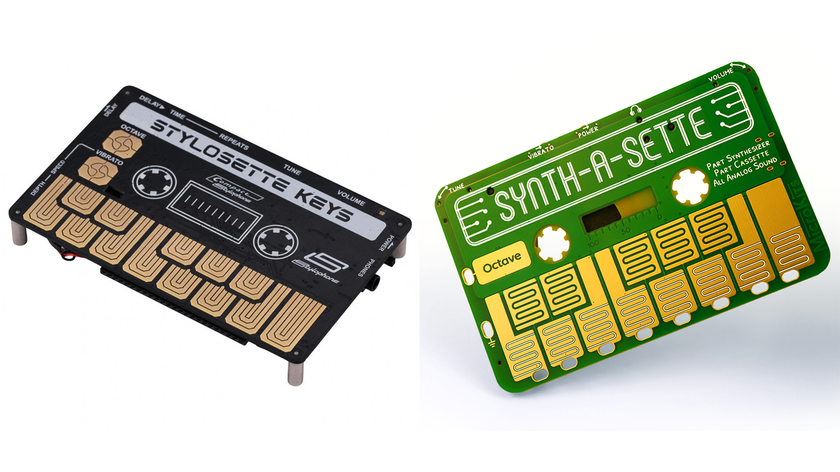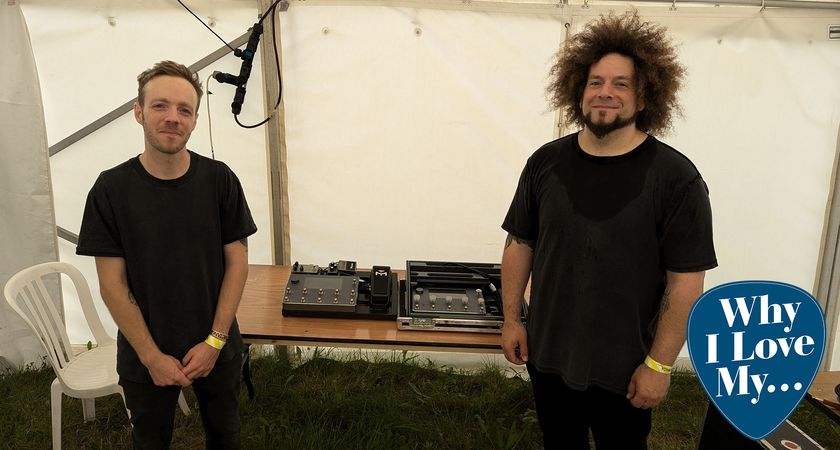Novation announces MiniNova synth
Comes with vocoder and gooseneck mic

Novation MiniNova

Novation MiniNova

Novation MiniNova

Novation MiniNova
Novation has announced a new hardware synth, the MiniNova. This is based on the same synth engine as the company's UltraNova instrument but, as its name suggests, is a more compact proposition that has some unique features of its own.
The most eye-catching of these is VocalTune, which translates into a vocoder and a built-in gooseneck mic. There's also an arpeggiator, plus an Animate function that lets you warp sounds as you play.
It's also worth noting the MinoNova's retro stylings; these call to mind Korg's MicroKorg, which the new synth will inevitably be compared to.
You can find out more in the press release below. MiniNova will be available in October priced at £299.99.
Novation MiniNova press release
Novation has announced MiniNova, an amazingly powerful but compact synthesizer that packs never-seen-before features, including push-button Animate controlsand Novation's brand new voice effect: VocalTune™.
Key Features:
- 37-note mini-keys synth with custom-designed Novation keybed.
- Extremely powerful sound and effects engines from Novation's flagship UltraNova synth.
- New VocalTune feature with feature-packed vocoder and included gooseneck mic.
- Arpeggiator with real-time rhythm performance editing.
- Animate function lets you warp your sounds while you play.
- 256 amazing factory patches included, with space for a further 128 user patches.
Withover 15 years of family heritage and decades of design experience, MiniNova is built around the same synth engine as Novation's flagship, UltraNova. Featuring three versatile oscillators, up to five effects, two filters, six envelopes, three LFOs, and 36 different wavetables, it's capable of creating a vast range of jaw-dropping sounds, suitable for every genre. Simple patch browsing comes courtesy of a large genre-select knob and an easy-to-use scroll wheel, bringing instant search and recall of the 256 factory and 128 user patches. MiniNova is perfect for synth players who want to find sounds quickly: simply choose the type of sound you want, then sculpt the patch to match your track. A powerful parameter matrix puts 24 powerful sound-shaping tools under your fingertips on four large, tactile knobs. The dedicated filter cutoff knob allows you to always give your sound the 'wow' factor.
MiniNova introduces VocalTune, an amazing effect that can tune your voice to the note being played on the synth in real time. It also features a powerful new vocoder engine, which can be fed by either the included gooseneck mic or the external input. Novation's unique 'Animate' buttons let you apply up to eight deeply expressive modulations, with a hold button that latches any or all of the animations. Arpeggiate mode lets you easily play and program your rhythmic synth parts on the fly. What's more, MiniNova connects to your computer via USB, where free plug-in software can be used for patch library management.
Get the MusicRadar Newsletter
Want all the hottest music and gear news, reviews, deals, features and more, direct to your inbox? Sign up here.
MiniNova has two quarter-inch mono jack outputs, a stereo headphones output, full-size XLR and jack inputs for routing sounds through the vocoder and on-board effects, as well as a five-pin MIDI input and output and an input for a sustain pedal. Power can be supplied via USB or a 9V DC power supply (included).
Availability: worldwide in October 2012.
Pricing information: SSP £299.99inc. VAT
About MiniNova's design
MiniNova's synth engine was designed by synth-design legend, Chris Huggett. The Nova range has been in existence since the mid-90s, but MiniNova's heritage can actually be traced back to the 1970s: the golden era of synthesis. Huggett previously designed synths such as the Bass Station, SuperNova, Nova and UltraNova. He has decades of experience having designed such classics as the 1978 EDP Wasp and the OSC OSCar and he used elements of the design principles he previously applied in the analogue domain to give MiniNova the edge over other modern synths.

I’m the Deputy Editor of MusicRadar, having worked on the site since its launch in 2007. I previously spent eight years working on our sister magazine, Computer Music. I’ve been playing the piano, gigging in bands and failing to finish tracks at home for more than 30 years, 24 of which I’ve also spent writing about music and the ever-changing technology used to make it.
Most Popular









